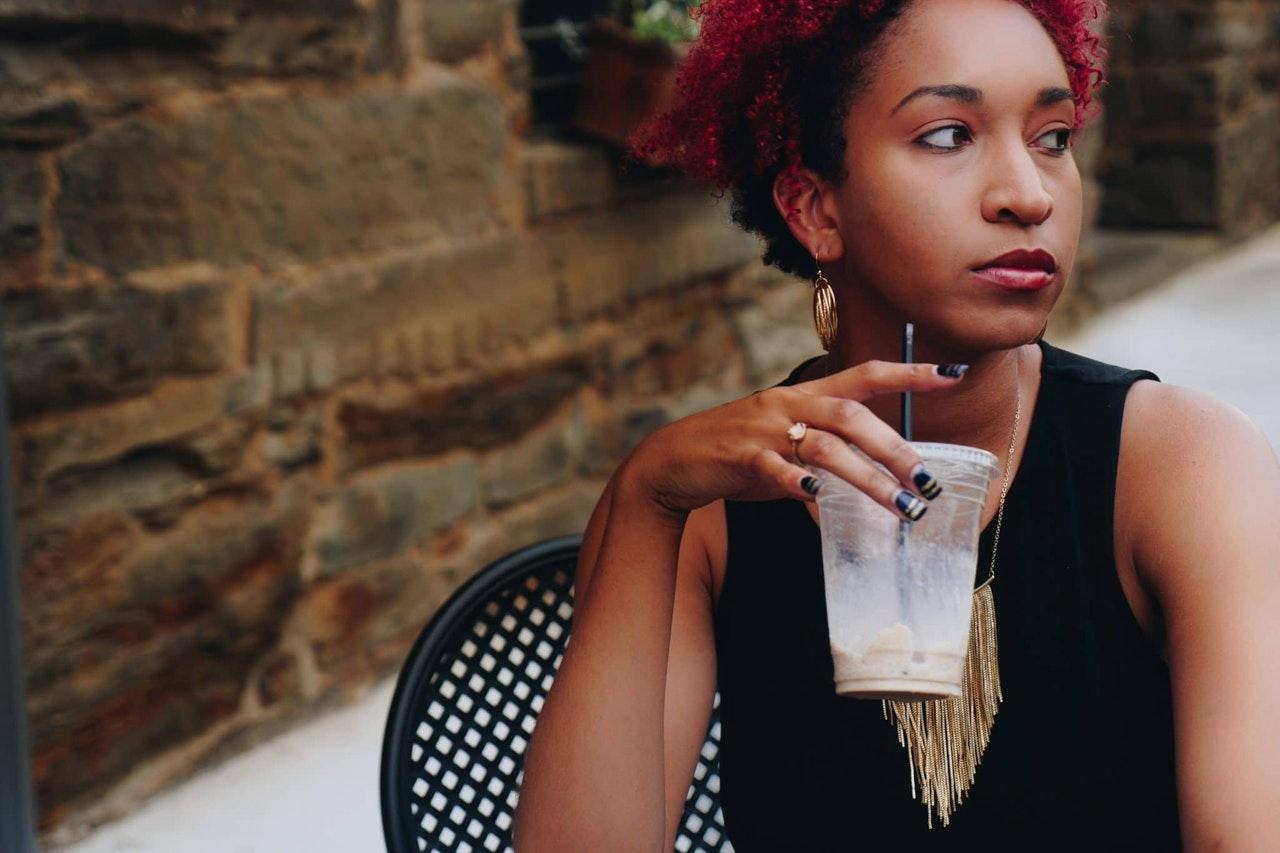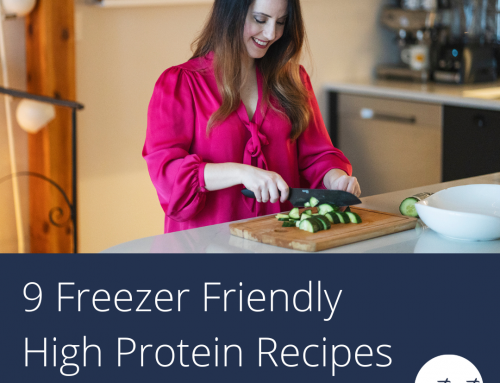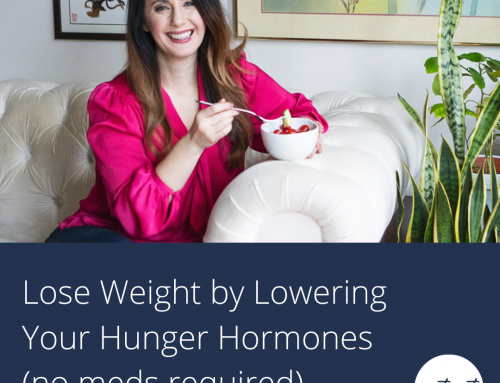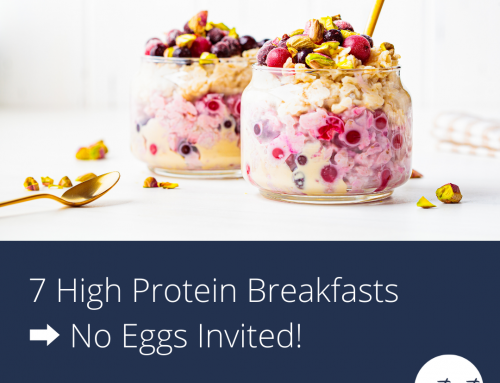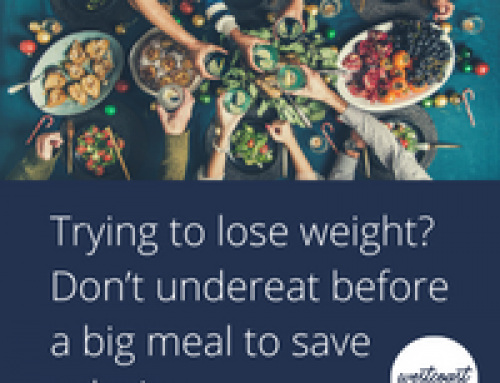How much water should you be drinking? It’s one of the top questions I get from clients in the warm months whether their goal is a happy gut, steady weight loss, or more energy.
Do you really need a gallon a day? Should you only be drinking when you are thirsty? Does coffee really dehydrate you? So much confusion on this topic, but today I have answers. Let’s dive in!
We’ll cover:
- Signs you’re under or overhydrated
- How much do you actually need
- What fluids count
- Strategies for drinking when it doesn’t come naturally to you
Water hydrates all of our tissues (gut, skin, organs, muscles,), carries nutrients and oxygen so we can function, keeps our gut lining healthy to keep bugs out, and is involved in making chemical energy so we can get through our busy days!
Signs you might be under-hydrated
- Medium to dark yellow urine (other than first thing in the morning)
- Going more than 4 hours without peeing (comfortably)
- Munchy or extra hungry but no food really seems to hit the spot
- Feeling winded going up the stairs or doing normal-for-you activity
- Parched lips, mouth or skin
- Hard or lumpy poops, constipation
- Fatigue, moodiness (especially as the day goes on)
- Low carb diet (150 g or less)
- Exercising or working outside in the sun
- Dizziness when you stand up
Signs you might be over-hydrated
- Peeing every 30 minutes
- Totally clear and large volume urine
- Fatigue or brain fog with no clear reason (due to an imbalance between sodium and water called hyponatremia).
How much water do you actually need?
The magical 8 glasses or 2 Litres doesn’t work for everyone! This depends on weight, activity, age, environment, diet type and genetics.
Start at: 25-35 mL of water per kilogram of body weight (11-16 mL of water per pound of body weight).
Exercise: Add 125-250 mL for each hour of activity (low to medium intensity like walks, easy hikes, or strength workouts), or 500 mL per hour of activity for higher intensity (conditioning or HIIT workouts, runs, steep hikes, or exercise in warm weather).
Adjust: If you still don’t feel awesome, play with going up a little for a week or two, and then trying a bit less for a week or two. Genetics does play a role here. I’m a small human but feel best at 3L on even my low active days, I also have clients who do well on about 75% of what I’d expect. Don’t stay where you are without experimenting, treat it like your own little research study to find your sweet spot.
What counts as “hydration”?
So many myths here, but just about everything that is liquid counts towards your hydration. That does include coffee and tea (if you drink it regularly it isn’t dehydrating in the 2-3 cup per day range), juice, milk etc. It of course includes pure water and hydration drinks like sports drinks, Gatorade, electrolytes etc.
The best option for most of us? Mostly water, with a few cups of something else for fun and flavour if it fits in with your goals.
The only things that don’t count are alcoholic beverages or highly caffeinated energy drinks like red bull. They aren’t “bad” necessarily but they will cause your kidneys to get rid of more water through urine than you take in by drinking them.
I’m not thirsty & I hate water – try this:
Some people are not born drinkers (or just are not yet into the habit). The most common barriers I hear are:
I’m not thirsty: Our thirst cue is often not as reliable as our hunger cue. It tends to be less specific until you’re actually dehydrated (often masquerading as hunger or snackiness) and gets less useful every decade. You should definitely drink more when you’re thirsty, but you should also aim to prevent it day to day.
I hate water/forget to drink: You’re not alone! The habit can be hard to build if your thirst cue is slow to kick in, life these days feels packed, and you may just find the taste of water unenjoyable so packing in 1.5-3L per day is a chore. Here are some options to help get you over the hump.
Flavour it (sugar free if possible): Toss in frozen berries, fresh watermelon cubes, mint, cucumbers, basil, a few drops of vanilla extract, whatever is in your fridge! If none of those work try a stevia based flavour drop or electrolyte tablet (such as nuun).
Find a vessel you like drinking out of: Sounds too easy, but it works! I feel like Starbucks and Homesense owes me some royalties for how many clients invest in a cup with a straw, a bigger bottle, an insulated one (to keep it cold or hot), or just a new one to get rid of that funky leftover smell in your current one.
Try a water substitute: Tea (black, green or herbal) hot or cold is a great option with lots of flavour. Try bubbly (water, not champagne – although no judgement here) instead of flat. Puree some watermelon or berries with ice and drink it like a slushie.
Build the habit: Everything gets easy the more reps you put in, it’s only awkward in the beginning. Try an app, a sticky note on your phone, or a reminder that can pop up a few times per day to help you get going. Timing of meals, rituals like getting ready or making coffee or other things that you do daily can also help make it easier to remember.
What is your biggest struggle with staying hydrated?
Reply here and let me know, I’ll be sharing answers to your questions over on Instagram next week! If you want me to tag you, include your handle so you don’t miss my response.
Need some help getting your meals for the week balanced and prepared? If you’d like to receive our free Meal Planning Getting Started Guide AND get in on our weekly emails about all things nutrition so you can get clarity and confidence on what you’re eating, join us here!
PS. Beautiful picture from @eyeforebony on Nappy photos.


